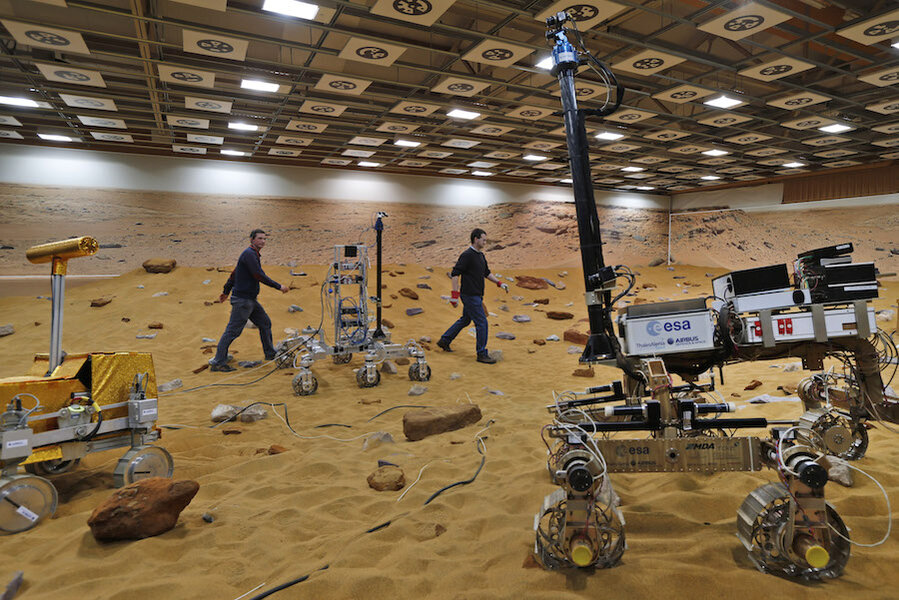Tim Peake's next challenge: Driving a rover from space
Loading...
The International Space Station (ISS) astronauts may soon have a new duty – driving rovers on distant planets.
Tim Peake, the popular European Space Agency (ESA) astronaut who ran a marathon in space earlier this week, will have to steady himself in a seat aboard the ISS as he pilots a rover on Earth on Friday. The driving is part of a project simulation program, called Meteron, in which a Mars rover will be driven around a faux-Mars landscape in England.
The end goal, however, will be for an astronaut orbiting outside a distant world to help direct a rover in dangerous maneuvers.
"Space is such a harsh place for humans and machines that future exploration of our Solar System will most likely involve sending robotic explorers to 'test the waters' on uncharted planets before sending humans," the ESA says on a Meteron website. The project is developing hardware, communication networks, and robot interfaces to make that a reality.
An earlier task for the Meteron project had astronaut Andreas Mogensen remotely operating a robot on Earth to put a round peg into a round hole.
Peake's mission will be complicated by cosmic logistics. Using two laptops on the ISS, he will have to learn how to operate the rover for the first time by driving around a gentle area in the simulated Mars environment, called the Mars Yard, in Stevenage, England. After he has a handle on the controls, he will have 90 minutes to enter a dark Mars-like cave to perform some tasks – the details of which he won't learn until just before the mission starts. Nor will he know much about the controls before the task begins.
"The whole idea of the simulations is to see if the operational products we make are clear enough for someone who is driving the rover for the first time," writes flight operator Koen Struyven in a blog post for the ESA.
But even with a clear conceptual understanding of the controls and missions, obstacles remain.
Beaming commands from the ISS to the rover on Earth will require many intermediaries. The rover will be situated in England, the network connectivity management will be performed at the ESA space operations center in Germany, and the ISS operations will be monitored by B.USOC in Belgium, according to the ESA.
In all, the distance and intermediaries means every command could be delayed by several seconds.
And going into a dark cave with a rover is a high-stakes maneuver, as BBC science correspondent Jonathan Amos explains:
Going into a cave would be extremely risky. The lack of light would make it harder for the sensors on the autonomous navigation system to discern hazards. And with no sunlight falling on the robot's solar panels, the amount of energy available to operate in the cave might very quickly become an issue.
But for Peake, it's possible the entire simulation will be just another unorthodox day in space. Earlier this week Peake set the world record for fastest marathon in orbit, completing the London Marathon in 3 hours, 35 minutes, and 21 seconds on a treadmill aboard the ISS. And earlier this month, he used a robotic arm on the ISS to grab a cargo ship.








